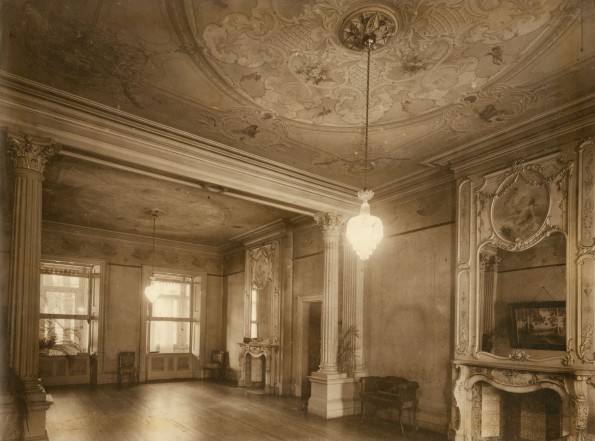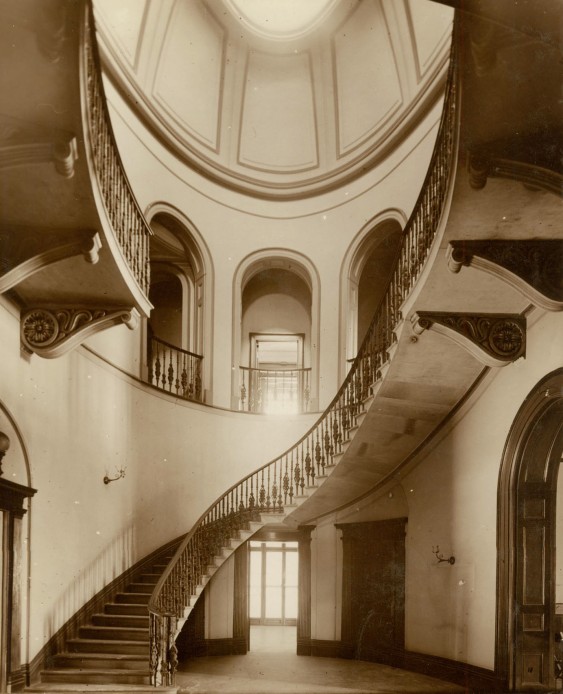At the beginning of the 1960s, architect and critic Robin Boyd looked at the architectural heritage Sydney had lost, or which was then still in danger:
The pioneering spirit which transforms the natural environment is equally satisfied with transformation wrought on the products of the architecture and landscaping arts of earlier days. The decade before the Second World War in Sydney, and the decade after in most other capitals, saw the most violent destruction of historic colonial buildings. In that period Sydney lost many of its best old buildings, including Burdekin House in Macquarie Street: a three-storey stucco mansion of 1841, with two bland upper floors and a veranda-shaded ground floor, Burdekin House was quite the largest, best known and most handsome colonial house in Australia, and it had sufficient charming Regency ornamentation and craftsmanship to ensure the broadest popularity. Nonetheless it came in the path of progress and was demolished, although its fine columns were preserved. They were cut shorter and re-erected in their somewhat stumpy new proportions on the veranda of St Malo, a cottage at Hunter’s Hill on the Parramatta River, which came under the protection of the National Trust of Australia. But still it was hounded: two decades later St Malo itself stood in the way of a new highway and soon it too was marked down for early demolition.

The drawing room, also known as the ballroom, Burdekin House, 1933 / Thomas J. Lawlor (Historic Houses Trust of NSW)
The total loss of buildings like Burdekin House was almost to be preferred to the mutilation to which other sensitive buildings of Australia’s infancy have been subjected. Elizabeth Bay House, a fine building of 1832 by one of the most cultivated of the early architects, John Verge, is periodically threatened. At the time of writing it still stands. Its elegant oval hall, perhaps the most famous architectural detail in Australia, is now painted in a contemporary two-tone treatment of green and creamy yellow. Australia’s oldest remaining building, Elizabeth Farm, Macarthur’s homestead of 1793, the cradle of Australia’s wool industry, is poorly painted, crowded by the suburban houses of Harris Park near Parramatta, and forgotten or unrecognized by most of its neighbours. There is no malevolence here; only a painful void where a national sense of history might be expected. But at least these two buildings still stand while many as significant and beautiful in their time are gone. Of all the hundreds of examples of early work illustrated by Morton Herman in his Early Australian Architects only twelve were in a recognizably intact state when he published the book in 1954. ‘No architecture in the world has been so maltreated,’ he remarked. The mutilation took two forms: deliberate remodelling, sacrifice to some newer fashion; and wantonly careless additions: sleepout, fibro-cement screens to verandas, iron¬roofed skillion blobs of various sorts buttoned on to the sensitive, or at very least careful, formal structure of the days before the home magazines.
–Robin Boyd, Australian, 1919-1971


![South Head, Sydney Harbour from Potts Point, 1940 / Sydney Ure Smith [Elizabeth Bay House in foreground] (State Library of NSW)](https://sydneyanthology.files.wordpress.com/2014/10/elizabeth-bay.jpg?w=496&h=354)